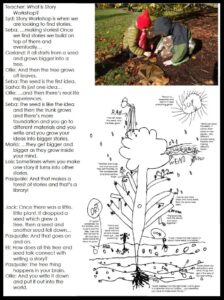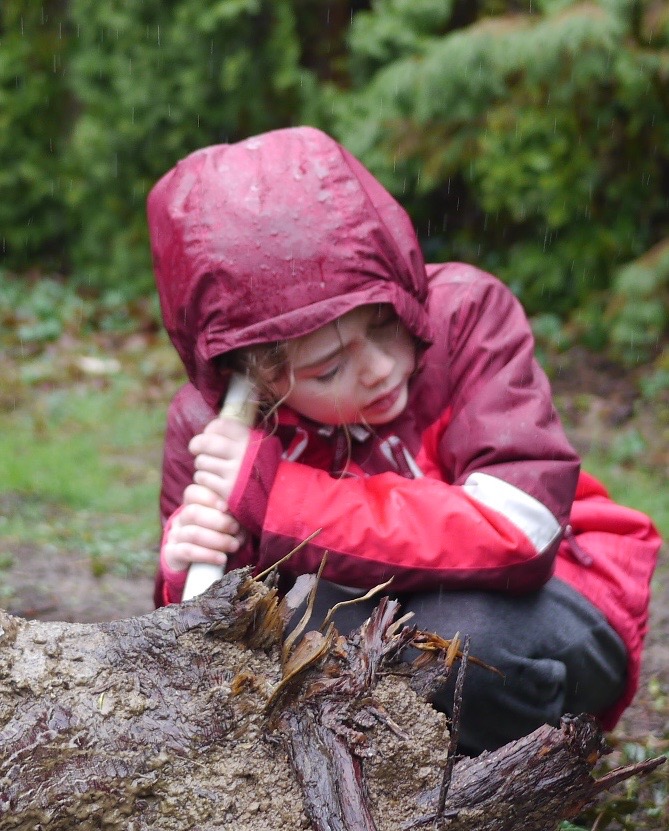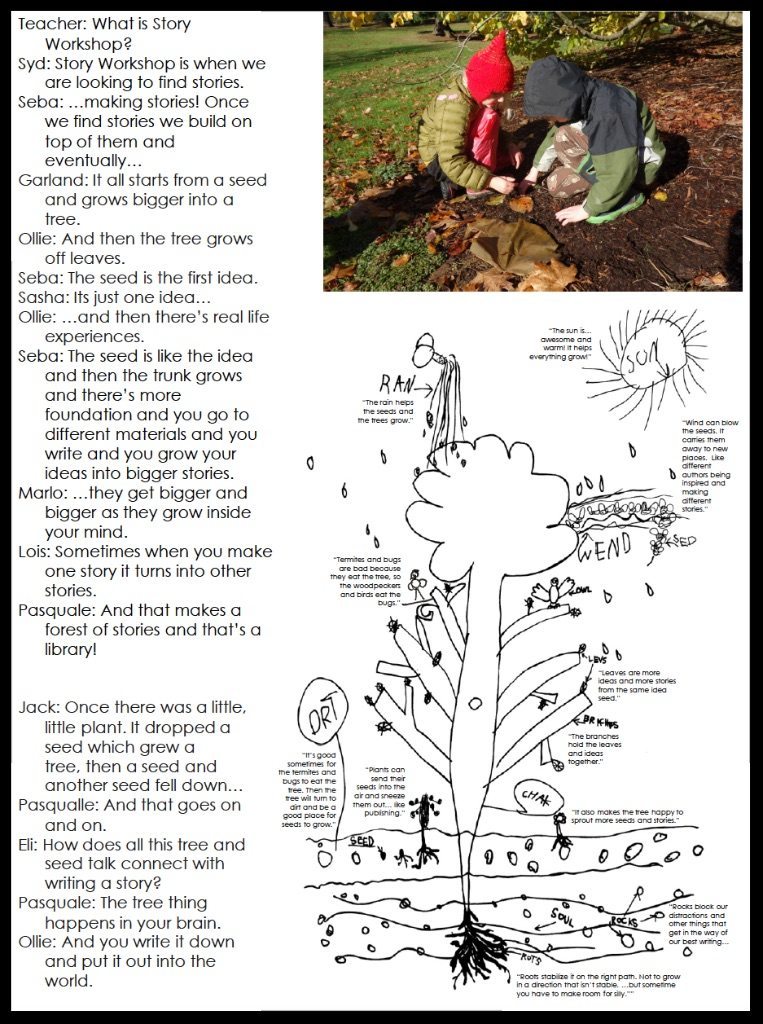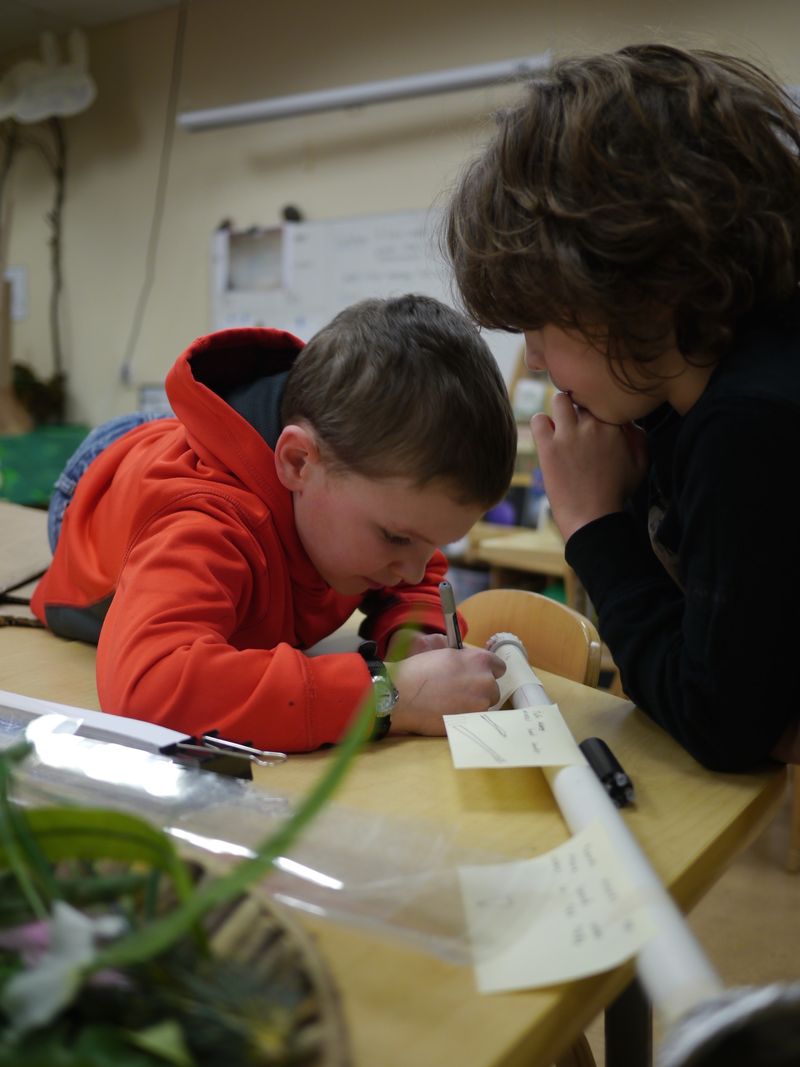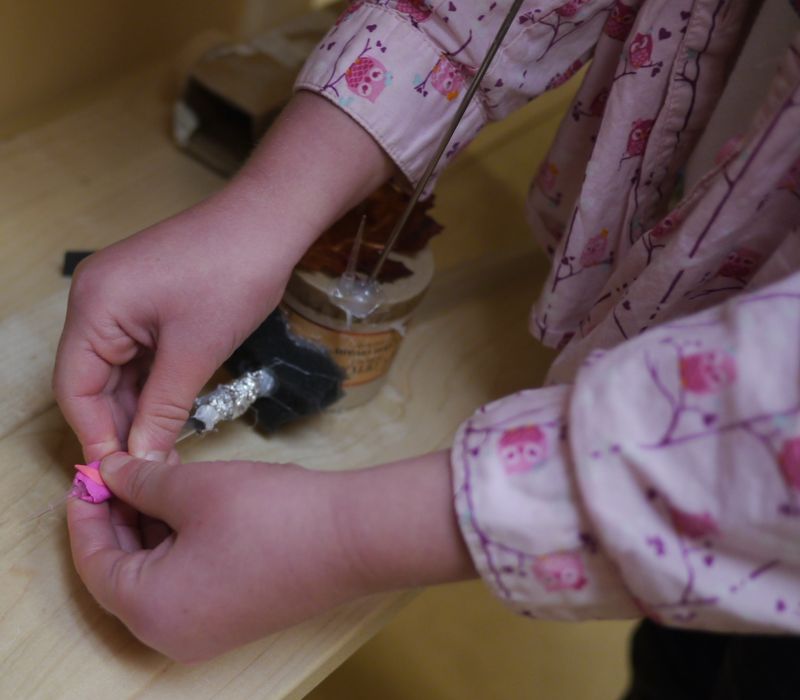Listening to children listening to trees

As we aim to create a school founded in a strong image of the child, we need to constantly consider our image of childhood and its relationship to adulthood. What might it mean to create curriculum based around the unique gifts of childhood? How can we embrace children’s capacity to see beyond the limits of the known world? How can we place children’s sense of empathy, imagination, and metaphorical thinking at the heart of our work? How might children’s way of seeing the world provide new dimensions to everyone’s understanding of the world?
At the beginning of the year in Magnolia Classroom, the first and second graders were asked their ideas about Story Workshop:
This metaphorical thinking, relating plant cycles and the development of ideas, has germinated across the classroom community, taking root in a range of discussions and experiments. It has opened doors to project work exploring the relationships between these children and the natural world. When teachers came across research discussing how trees communicate among one another[*], they shared it with the group and it delighted and intrigued them.
How might these children find a way to bear witness to the communication of trees in Hoyt Arboretum? To communicate back? To imagine a reciprocal correspondence? As children got to work prototyping devices to solve this design thinking challenge[x], they were asked why kids might be the right people to solve these problems.
Taylor: Because we still have a lot of ideas. Grown-ups kind of forget them.
Ollie: Kids believe in fairies. We believe in other things that parents don’t.
Owen: Actually, kids grow into adults.
Owen’s contribution seems to be met with a sense of disequilibrium and commotion.
Teacher: How do you think they lose these ideas?
Sasha: Because they start thinking about survival.
Lois: About taking care of their families.
Eli: About their taxes.
Taylor: Kids are just more interested and want to learn more. They want to learn the next thing that no one knows.
Teacher: What if we find out something that we don’t want to know? Something that we don’t expect?
Sasha: Wait wait wait – Tell me more! I love dangerous things.
As this investigation unfolded, I saw our district’s Speech Pathologist with a big smile on her face. Asking her about it, she explained that she loves these investigations – that this immersion in imagination, materials, and ideas is great for the children she works with. She tells me about how they develop beautiful stories, alive with exceptional language, that she sees as catalyzed by these conditions.
When we listen to children listening to trees, curiosity, connection, and communication erupts. Children deserve schools that embrace those qualities.
[*] Plants? Communicate with each other? Really? Before you write this off as just another example of crazy Portland-think, check out this and this and this and this and realize how much more beautiful the world becomes when we open our minds to greater possibilities.
[x] An approach for which we are indebted to Melissa Pelochino of Stanford’s dSchool.